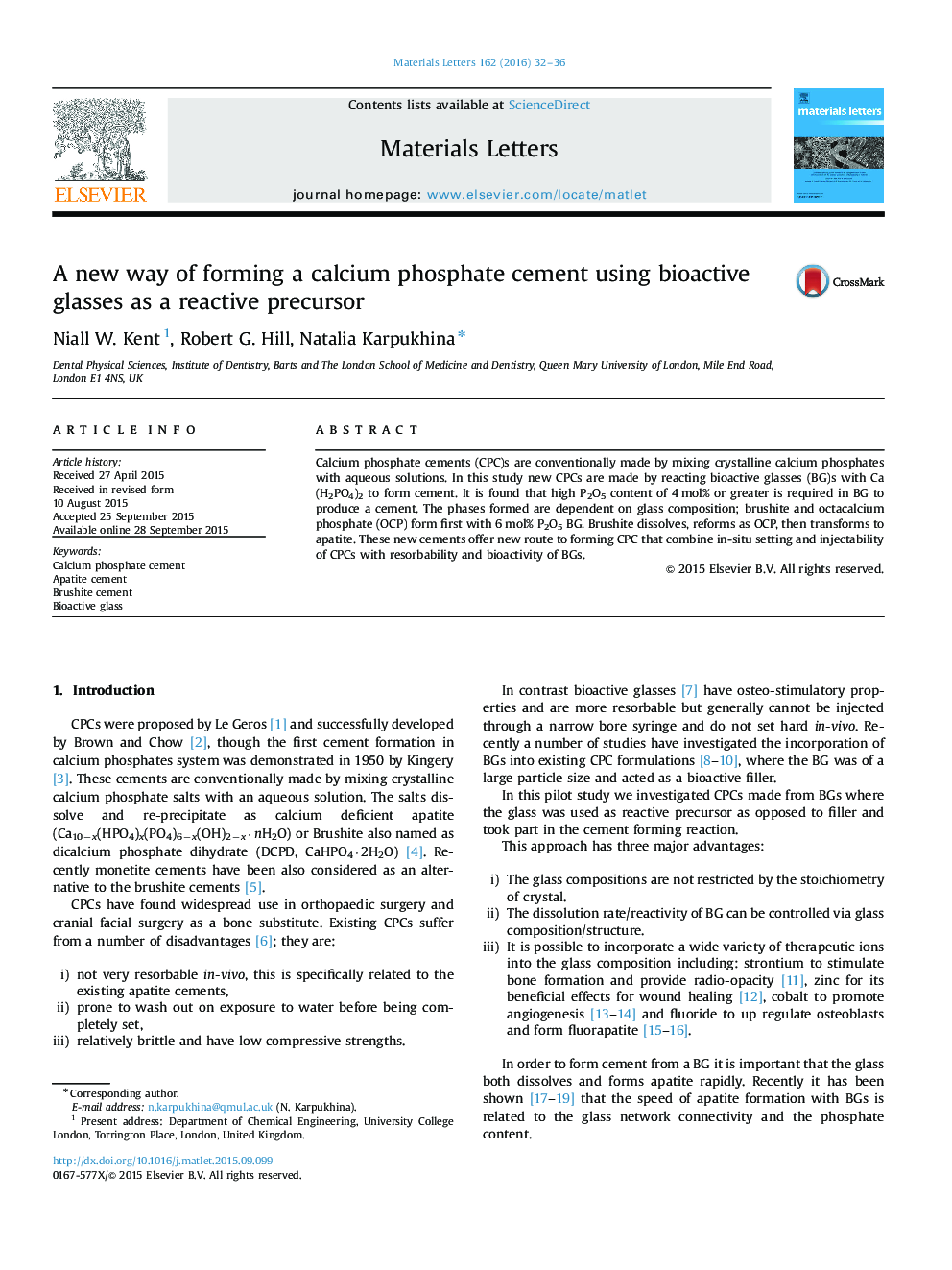| Article ID | Journal | Published Year | Pages | File Type |
|---|---|---|---|---|
| 1641653 | Materials Letters | 2016 | 5 Pages |
•A new way of making calcium phosphate bone cements is proposed.•Bioactive glass reacts with soluble calcium phosphate to form new cement.•The properties of the cements can be controlled via the glass composition.•The phases desired to be in the final set cements can be regulated via the glass composition.
Calcium phosphate cements (CPC)s are conventionally made by mixing crystalline calcium phosphates with aqueous solutions. In this study new CPCs are made by reacting bioactive glasses (BG)s with Ca(H2PO4)2 to form cement. It is found that high P2O5 content of 4 mol% or greater is required in BG to produce a cement. The phases formed are dependent on glass composition; brushite and octacalcium phosphate (OCP) form first with 6 mol% P2O5 BG. Brushite dissolves, reforms as OCP, then transforms to apatite. These new cements offer new route to forming CPC that combine in-situ setting and injectability of CPCs with resorbability and bioactivity of BGs.
